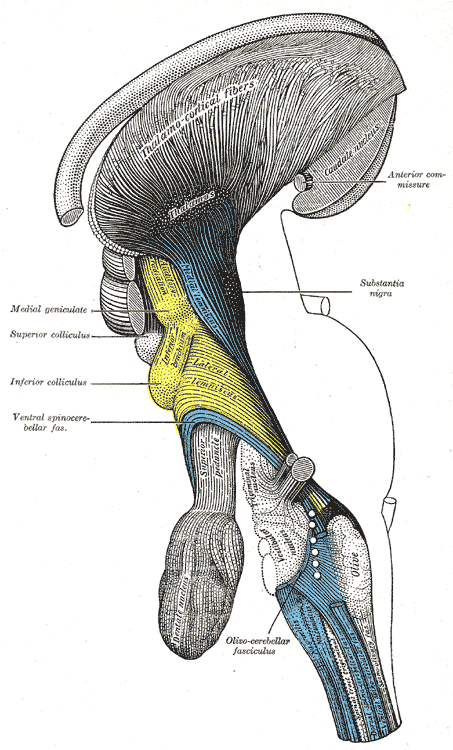Part of Midbrain NeuroNames hier-448 Dorlands
/Elsevier Tectum of midbrain | Latin tectum NeuroLex ID Midbrain tectum TA A14.1.06.601 | |
 | ||
The tectum (Latin: roof) is a region of the brain, specifically the dorsal part of the midbrain (mesencephalon). This is contrasted with the tegmentum, which refers to the region ventral to the ventricular system. The tectum is responsible for auditory and visual reflexes.
Contents
It is derived in embryonic development from the alar plate of the neural tube.
Colliculi
In adult humans, it only consists of the inferior and the superior colliculi.
Both colliculi also have descending projections to the paramedian pontine reticular formation and spinal cord, and thus can be involved in responses to stimuli faster than cortical processing would allow. Collectively the colliculi are referred to as the corpora quadrigemina.
Related terms
The term "tectal plate" (or "quadrigeminal plate") is used to describe the junction of the gray and white matter in the embryo. (ancil-453 at NeuroNames)
